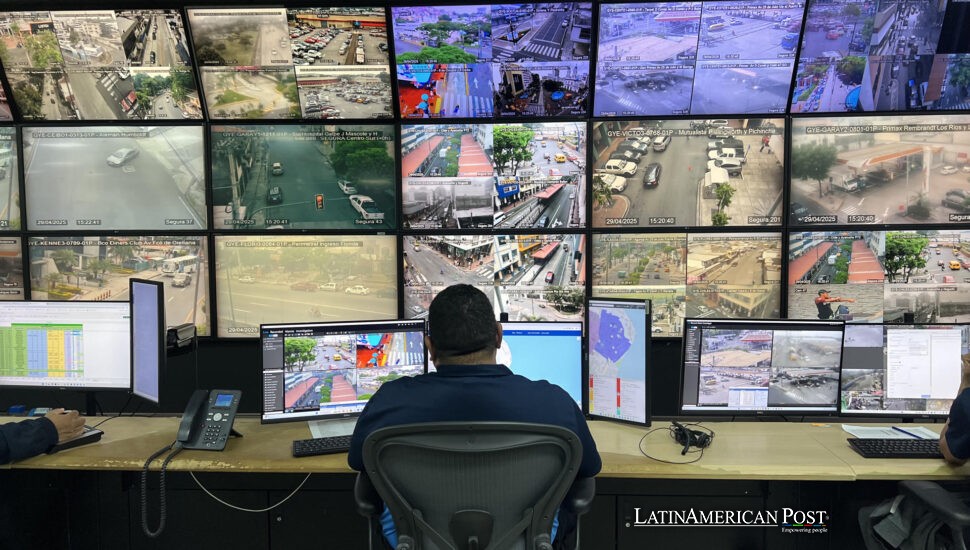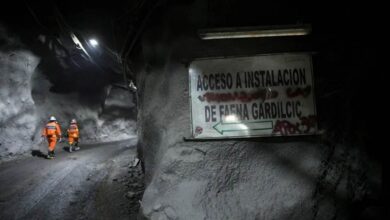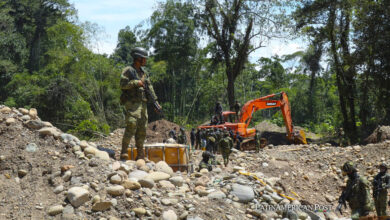Ecuador’s All-Seeing Network Fights Crime with Unblinking Vigilance

In Ecuador’s bustling city of Guayaquil, a sophisticated network of thousands of cameras and cutting-edge artificial intelligence tirelessly tracks would-be criminals. Amid a rising tide of violence, operators watch every corner, hoping to stop crimes before they escalate.
A City Under Constant Watch
Guayaquil, the country’s most populous city, has emerged as a hotbed for criminal activity, in large part due to its strategic port that drug cartels use to funnel narcotics to North America and Europe. With incidents of robbery, kidnapping, and homicides soaring in recent years, local authorities have turned to technology to break the cycle of violence.
The central area for this operation sits inside the video surveillance room at Segura, the security company for the municipality of Guayaquil. Many screens simultaneously display video feeds from an extensive camera network across the city. The scene can transition instantly from relatively calm to high alert as operators spot a theft in progress, a suspicious vehicle, or a possible kidnapping.
Segura’s president, Fernando Cornejo, described the system’s reach and sophistication to EFE, emphasizing Guayaquil’s dense coverage: “Guayaquil is the most heavily monitored city in our region,” he said. Since 2008, more than 34,000 cameras have been installed throughout the municipality to deter criminals and assist law enforcement.
Cornejo also said specialized technology tools, such as image recognition dependent on artificial intelligence, heat maps, and license plate readers, are essential for fast threat detection. Cornejo asked people to think about crime numbers if those tools were absent. After 2023, they recovered 803 vehicles and prevented over 14,000 crimes. The information shows a continuing difficulty.
By March 31 of this year, Guayaquil recorded 5,042 robberies out of 16,595 reported nationwide, according to Ecuador’s Prosecutor’s Office. Killings show a similar pattern. From 2,361 homicides throughout Ecuador during the first three months of the year, Guayaquil had 741. This shows the city is the place with the most murders in the nation.
Technology Caught in Bureaucratic Tangles
Cameras continue to spread, and the command center is intricate. Coordination with national agencies became complex. In late 2024, the central government under President Daniel Noboa removed Guayaquil’s municipality from managing the local 911 emergency service known as ECU-911.
Previously, Segura’s staff directly received and dispatched emergency calls to the appropriate responders, whether police, firefighters, or medical services. Cornejo told EFE this direct involvement allowed them to transfer vital information in under two minutes, reducing response times on the streets to about 18 minutes. But now, the city must funnel calls through the national ECU-911 network, adding extra layers and sometimes delays. “We’re seeing wait times exceed three minutes, and if the necessary units do deploy, it can be more than thirty minutes before they arrive,” Cornejo said.
He insisted this breakdown in cooperation has contributed to Guayaquil’s spiraling crime rates. Under the previous system, the city’s security workforce acted swiftly, dispatching police to intercept criminals at the scene or communicating with municipal agencies to handle non-criminal emergencies. The municipal authority remains willing to coordinate closely with the national government today, but politics and jurisdictional disputes stand in the way.
Despite these challenges, Segura’s operators have continued to detect everything from petty theft and drug dealing to kidnappings and firearms in public spaces. When one of the city’s thousands of cameras flags a stolen vehicle by reading its license plate or spots a suspicious gathering outside a school or gas station, the control room can guide authorities to the site in real time.
Cornejo stressed the value of these measures in a city that houses Ecuador’s largest prison and busiest ports, attracting organized crime. He hopes the municipal and national governments can resolve their differences to create a seamless, unified response system. “Guayaquil is too important for criminals,” he stated. We can’t let bureaucracy weaken our response.”
Eyes on Schools, Streets, and Seas
Thanks to its sophisticated network, Guayaquil monitors more than petty theft and armed robberies. The system extends to schools—where youth are increasingly targeted by gangs—gas stations, and public markets. This scope ensures that Segura’s command center can identify criminal acts and everyday civic emergencies such as medical situations, sewage blockages, or power line damage.
Cornejo revealed to EFE that the municipality will soon deploy private security guards equipped with drones to expand the city’s surveillance capabilities further. The action should improve real-time observation from the street and the sky, adding a layer to the city’s extensive camera system. All drone video goes to the control center, permitting quick reaction to dangers or emergencies.
Of importance is the port. Guayaquil is a center for international drug networks. By surveying large cargo spaces, the city works to stop smugglers. They may try to use shipping containers to send illegal drugs from Ecuador. “We are set up to catch thieves, kidnappers, and micro traffickers,” Cornejo said, “but we’re also well aware that we must stop larger-scale trafficking operations. The cameras and integrated technology provide a crucial line of defense.”
Many residents like that security measures provide more comfort. This is true in areas where risk is elevated. Some people do not think that so much monitoring is correct, as it affects civil liberties. Officials say data handling is responsible. The large amount of devices viewing public spaces causes worry about privacy.
For now, most Guayaquileños focus on the immediate priority: diminishing everyday violence. Residents want a safer city where children can attend school without fear of gang recruitment and businesses can operate without extortion threats. Whether driving on the highway to the coast or strolling through busy intersections in the urban core, locals are keenly aware that someone—somewhere—is watching.
Returning to the command center, those silent monitors blink on, capturing the busy thoroughfares of one of Ecuador’s most dynamic cities. Operators stare intently at their screens as a car pulls over unexpectedly or a figure moves suspiciously near a shop. An alert goes out, and a phone call dials the national ECU-911 center. Luckily, the waiting police patrol will arrive in time to prevent another statistic on Guayaquil’s turbulent crime ledger.
The municipality still supports surveillance that uses technology. The government opposes it. Cornejo thinks good methods and cooperation with organizations in the nation are essential to stop more crime. He says Guayaquil has a plan. The plan is not perfect and is new. It can be a guide for other cities in Latin America that have problems with violent crime.
Also Read: How Cutting-Edge AI Unveiled New Peruvian Nazca Lines
From the vantage point of those tens of thousands of lenses, Ecuador’s largest city reveals itself in unguarded moments—every suspicious step, every break-in attempt, every fleeting hope for safety. As officials debate how to streamline this complex system, ordinary people rely on it daily, believing that cameras and quick communication might make the difference when danger strikes.





